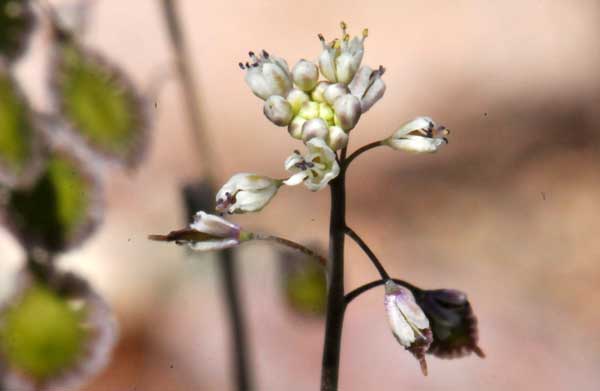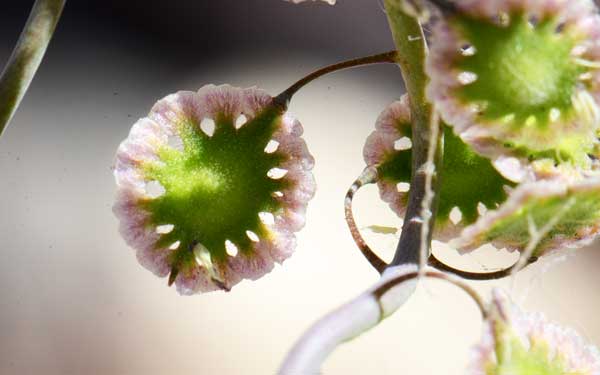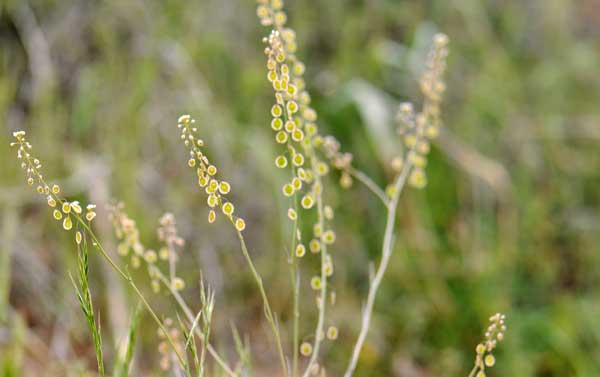Thysanocarpus curvipes, Lacepod Mustard



Scientific Name: Thysanocarpus curvipes
Common Name: Lacepod Mustard
Also Called: Lacepod, Sand Fringepod, Sand Lacepod
Family: Brassicaceae, Mustard Family
Synonyms: (Thysanocarpus amplectens, Thysanocarpus curvipes var. elegans, Thysanocarpus curvipes var. eradiatus, Thysanocarpus curvipes var. longistylus, Thysanocarpus elegans, Thysanocarpus foliosus, Thysanocarpus laciniatus var. emarginatus.)
Status:
Native
Duration: Annual
Size: Up to 2 feet or more.
Growth Form: Forb/herb; variable in form, slender erect, usually a single branch, pubescence on lower parts of plant.
Leaves: Green; basal and stem leaves variable, basal leaves variable, with stem (petiole), lanceolate; upper stem leaves erect, toothed and with clasping stem.
Flower Color: White, or purplish tinged; 4 petals and 4 sepals purple tinged, tiny flowers in small clusters on tip of slender branches, flowers with curved or recurved stems (pedicels ), the fruit is a flattened, rounded, wavy capsule, the edges of the disc are sometimes translucent.
Flowering Season: January to May, blooms later in California, February to June.
Elevation: Under 4,000 feet.
Habitat Preferences: Various habitats, rocky hillsides, washes, moist sandy soil and riparian areas.
Recorded Range: Lacepod Mustard is found in the western part of the United States in AZ, CA, ID, NM, NV, OR, UT, WA and British Columbia, Canada. It is also native to Baja California and Mexico. It is found throughout Arizona below 4,000 feet.
North America & US County Distribution Map for Thysanocarpus curvipes.
U.S. Weed Information: No data available.
Invasive/Noxious Weed Information: No data available.
Wetland Indicator: No data available.
Threatened/Endangered Information: No data available.
Comments: Lacepod Mustard is a common species found throughout Arizona in various habitats below 4,000 feet. It has a distinctive rounded or oval shaped fruit with small perforations around its perimeter. The plant is rather drab looking and inconspicuous but the distinctive rounded fruits are most interesting and appealing.
Lacepod Mustard is used as a food staple and as gastrointestinal aid. See other ethno-botanical uses at Native American Ethnobotany, University of Michigan, Dearborn.

